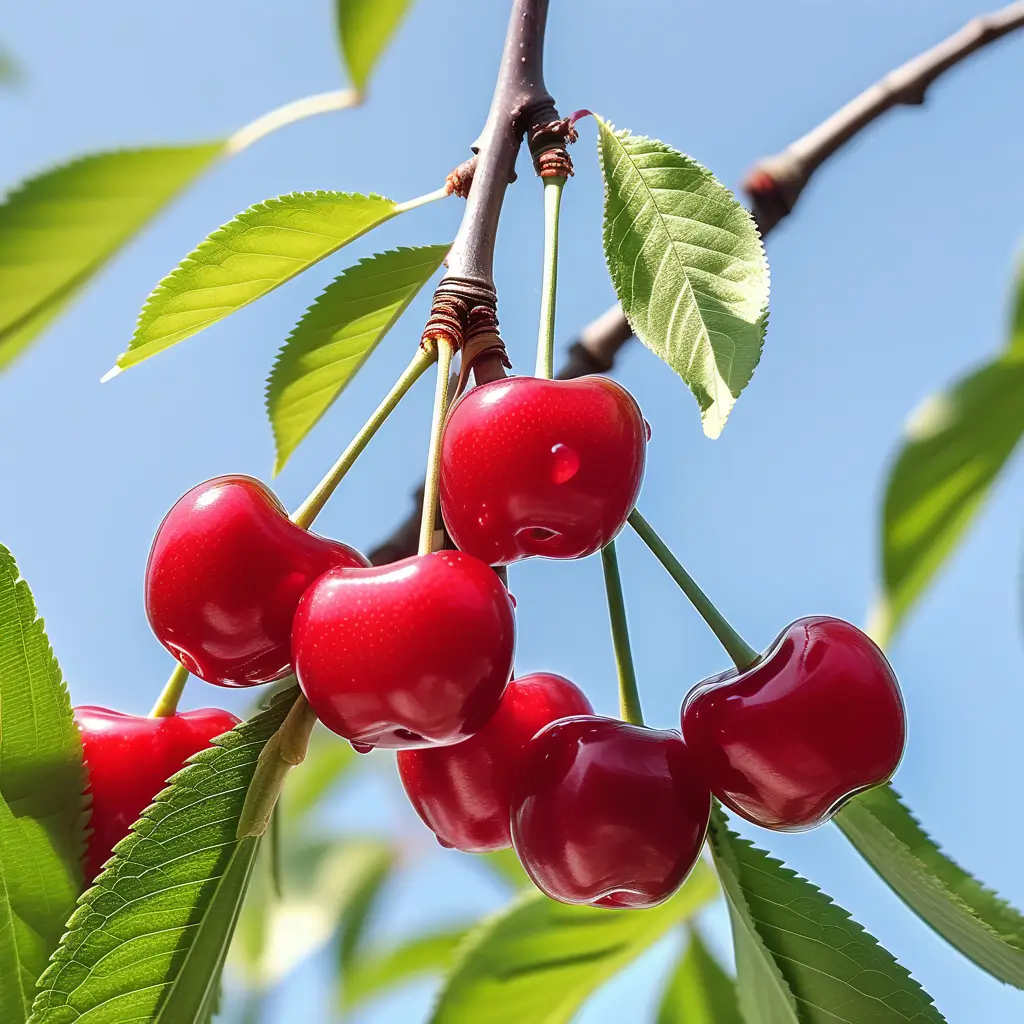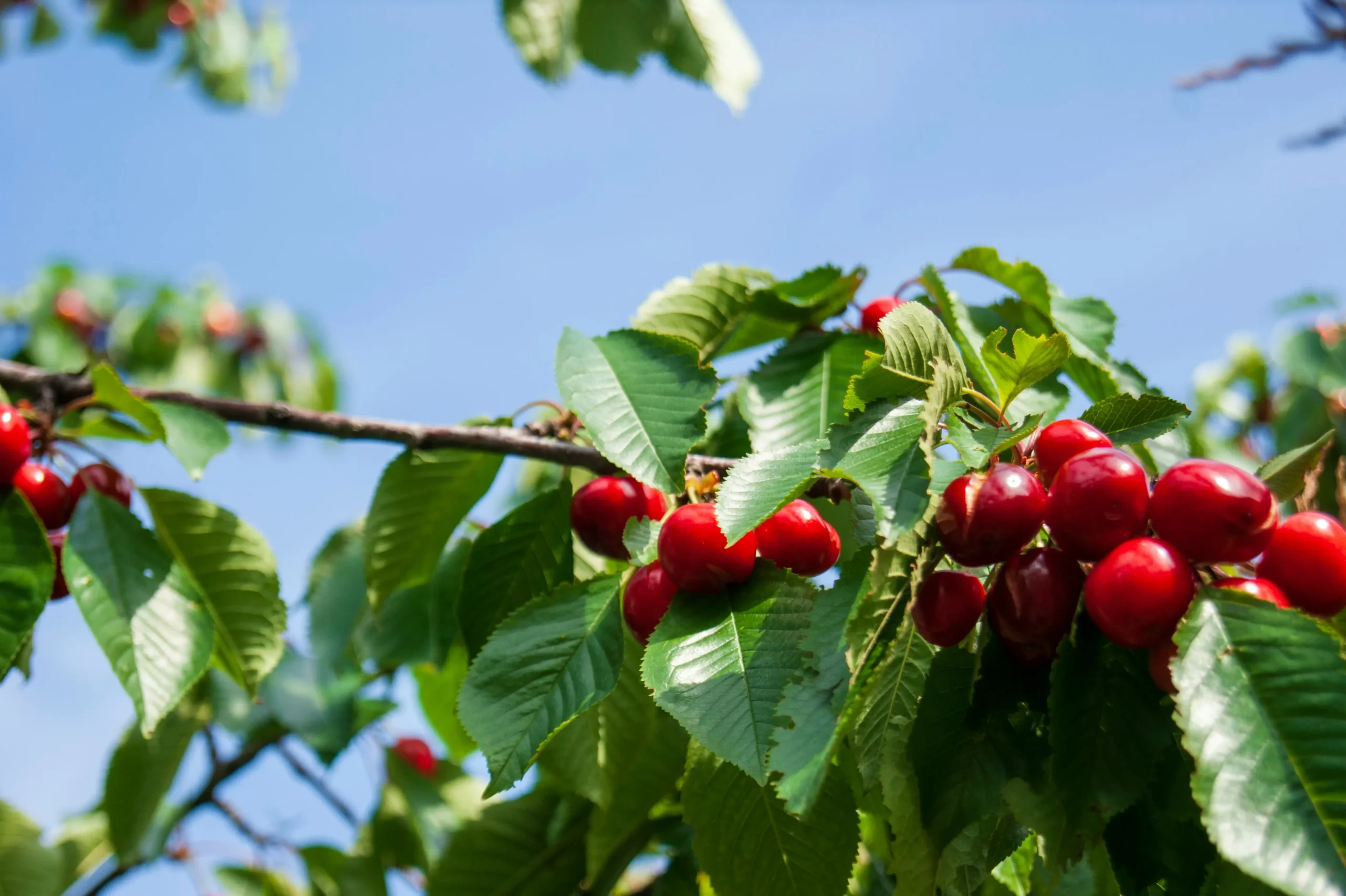Deciduous trees are those that seasonally lose their leaves as part of their natural annual cycle. As winter approaches and temperatures drop, deciduous trees actively shed their leaves to conserve energy and resources. So are common varieties of cherry trees that produce the sweet, tart, or ornamental blossom-bearing cherries deciduous?
What Defines a Deciduous Tree?
For a tree to be classified as deciduous, it must fulfill the following criteria:
- Sheds all leaves annually – Before winter, a deciduous tree will actively drop all of its leaves over a period of a few weeks or months. This happens because the tree pulls nutrients and critical elements like carbohydrates out of the leaves and back into the branches and roots for winter storage. The leaves then die, dry out and blow away in the wind.
- Grows new leaves in spring – After remaining bare and leafless through the winter, deciduous trees form brand new green leaves each spring. This signals the start of a new growth cycle where the tree produces food and regenerates its full set of foliage.
- Goes dormant in winter – Shedding its leaves allows a deciduous tree to enter a prolonged, deep state of dormancy through the winter months. All visible growth stops. The tree survives on the energy stored in its extensive root systems underground.
So in summary, a deciduous tree predictably drops all of its leaves before winter then sprouts new ones each spring after a leafless dormancy stage. It’s these weather-driven annual cycles that classify a species as deciduous.
Evergreen trees that retain most of their needles or leaves year-round are not deciduous. Their green foliage remains largely intact through winter, allowing them to continue photosynthesizing when conditions permit.
Types of Cherry Trees
The term “cherry tree” encompasses over 1,000 cultivars and hybrid plant species within the Prunus genus. There are principally three main types:
Sweet cherry trees (Prunus avium) – Produce the edible, sweet cherries commonly eaten fresh or used for baking desserts. Their fruits can be red, yellow, or black when ripe. Popular varieties include Bing, Rainier, and Lapins.
Sour cherry trees (Prunus cerasus) – Yield the tart Montmorency cherries predominantly used in cooking and baking rather than eaten raw. They have bright red skins and juice with high acidity.
Ornamental cherry trees (Prunus serrulata) – Grown for their vibrant displays of pink or white blossoms in spring. Japanese cherry tree cultivars like ‘Yoshino’ and ‘Kanzan’ belong in this category and are bred for decorative purposes rather than fruit.
So are these three main groups of cherry trees deciduous? Below we’ll examine their seasonal growth and dormancy cycles to determine if they shed their leaves annually.
Are Sweet Cherry Trees Deciduous?
Yes, without a doubt sweet cherry trees used to produce edible cherries sold commercially or grown recreationally are deciduous. More specifically:
- Sweet cherry cultivars actively drop all of their leaves for the winter season before growing them back in spring. Their foliage turns hues of yellow, orange, red, or brown before falling to the ground.
- They survive harsh winter weather and freezing temperatures in a dormant state, storing carbohydrate energy reserves underground until conditions improve.
- When spring arrives, sweet cherry trees conclude their leafless dormancy period by sprouting new green, vegetative buds that continue growing into fresh leaves.
- Flower buds also open into the familiar white 5-petaled blossoms that later develop into sweet cherries after pollination occurs.
In warmer climates where winters stay relatively mild, some sweet cherry trees keep a portion of their leaves year-round and take longer to leaf out. But most commercially grown sweet cherry orchards are located in temperate latitudes with cold winters necessitating complete defoliation – making this fruiting tree deciduous by definition.
Are Sour Cherry Trees Also Deciduous?
Just like their close sweet cherry relatives, sour cherry trees cultivated to produce the tangy fruits used widely in culinary dishes are deciduous plants. Specifically:
- Sour cherry trees including the Montmorency variety undergo seasonal leaf loss called abscission before winter dormancy sets in. Green summer foliage transitions to fall colors then detaches from branches.
- Throughout winter, sour cherry trees endure freezing temperatures and heavy snow or ice accumulation while in an inactive state without any leaves. All above ground vegetative growth halts.
- When soil begins to thaw in spring, signaling the end of winter dormancy, sour cherry trees complete their annual cycle by generating new leaves from vegetative buds. The young light green foliage continues expanding and darkening as spring progresses into summer.
So sour cherry trees share the same physiological behaviors classifying sweet cherries as deciduous – shedding entire leaf canopies before winter then regenerating new leaves after dormancy each spring. Both types of fruiting cherries adapt in temperate climates by dropping leaves during the coldest months.
What About Ornamental Flowering Cherry Trees?

The popular ornamental flowering cherries found gracing parks, gardens, and landscapes comprise dozens of cultivars. But in terms of leaf cycle and deciduous classification, we can summarize two main groups:
Deciduous Flowering Cherries
Most ornamental cherry trees prized for their bursts of spring blossoms are deciduous, including:
- Yoshino cherry (Prunus x yedoensis) – Perhaps the most famous as they bloom in white and pink masses around Washington D.C.’s Tidal Basin and other cherry blossom festivals. Yoshinos are decidedly deciduous.
- Kanzan cherry (Prunus serrulata ‘Kanzan’) – Named after its crimson-pink double blooms, it reliably loses all foliage each fall then regrows it by spring in USDA zones 5-9.
- Weeping cherry (Prunus subhirtella pendula) – The cascading branches on this landscape focal point get completely bare once cooler weather arrives.
These and other popular garden flowering cherry trees lose their vivid green leaves for a portion of the year qualifying them as deciduous plants.
Evergreen Flowering Cherries
Some ornamental cherry varieties keep their leaves year-round in warmer climates and are technically evergreens. Examples include:
- Carolina cherry laurel (Prunus caroliniana) – Native to the southeastern US with thick, leathery green leaves. Can maintain foliage in winter or lose a fraction of leaves depending on cold intensity.
- California cherry (Prunus ilicifolia) – Also called hollyleaf cherry due to the spiny evergreen leaves resembling a holly shrub. Goes semi-dormant in winter.
So while the most widely recognized flowering Japanese cherry trees planted for spring blooms are deciduous, a few ornamental cherry species retain their leaves in milder zones making them evergreens.
Why Do Cherry Trees Lose Their Leaves?
The primary reason behind deciduous cherry trees shedding all their leafy foliage before harsh winters has to do with survival efficiency. Consider the following benefits this cycle provides:
- Avoids desiccation – Dry, cold winter winds can rapidly moisture from broadleaf surfaces causing desiccation damage. Shedding leaves prevents this.
- Prevents freeze damage – Once leaves freeze and thaw repeatedly, their cell structure crystallizes and ruptures. Dropping leaves first prevents this destruction.
- Conserves energy – Through winter photosynthesis ceases. But tree roots, branches, buds and woody biomass remain alive underground. So trees enter dormancy and cut off unnecessary energy expenditure to leaves.
- Allocates resources – Trees withdraw and store critical carbohydrates, proteins, and nutrients from leaves through autumn back to roots and vascular tissues for winter survival and spring re-leafing.
In essence, losing the majority of foliage frees up precious resources and prevents structural harm to increase the tree’s chances of enduring through winter. Come spring, ample stored energy fuels the surge of new leaf and flower production.
Because cherry trees manufacture their food and energy via photosynthesis primarily in their leaves, dropping them for winter represents a strategic adaption to temperate climates allowing full foliage regeneration annually.
Signs Your Cherry Tree is Getting Ready To Lose Its Leaves
As autumn approaches you’ll notice clear visible indicators your cherry tree is preparing to enter dormancy. Here are the sequential changes:
- Slowing growth – Twig and leaf expansions starts winding down as cells prepare for dormancy. Fruit slows its development sizing and ripening pace.
- Fruit drop – Unripe or unused green cherries detach from branches and fall to the ground (June drop). Then mature, ripe fruit gets heavy and falls off (August drop), leaving branches bare.
- Color change – Cooler temperatures prompt leaf chlorophyll to break down as other pigments emerge turning leaves vibrant yellows, oranges, reds and purples before dropping. Expect fall colors starting at branch tips progressing inwards.
- Leaf drop – Pigments disappear as leaves die off and petioles detach, causing leaves to finally fall off branches leaving bare structure behind. Stems swell forming leaf abscission layers that physically cut off foliage.
- Bud development – While leaves actively fall, next spring’s leaf buds start forming and growing slowly hardened off against winter conditions. Flower buds also form and await opening.
- Branch dieback – As the tree goes dormant, weak inner branches that failed to get enough light die off and break off exposing more central wood.
Once these changes conclude, the bare deciduous cherry tree enters a dormant state for winter.
Caring for Deciduous Cherry Trees
Losing leaves doesn’t signal neglect or poor care in deciduous cherry trees. But some cultural practices help trees rebound vigorously after winter:
- Watering – Ensure soil moisture stays adequate leading into winter freeze then resume irrigation in spring just before bud break.
- Pruning – With leaves gone, it’s easier to see structure you can prune. Limit to small branches and deadwood to avoid stimulating too much growth before dormancy.
- Sunscald protection – Paint or wrap the southwest side of young thin barked trunks vulnerable to sun’s rays.
- Interest choice – For smaller gardens, pick compact deciduous cherry cultivar reaching max heights of just 15-25 feet.
Getting to know your tree’s deciduous tendencies when planted allows you to boost its seasonal performance through proper care.
Key Takeaways on Cherry Tree Deciduous Nature
- Most cherry trees including sweet cherry varieties grown for culinary fruit production are deciduous, losing all leaves annually before regrowing each spring.
- Sour cherries like the Montmorency also undergo winter defoliation and regrowth cycles confirming them as deciduous trees.
- Many flowering Japanese cherry trees are deciduous though some warmer climate evergreens like California cherry laurel keep leaves year-round.
- Strategic leaf loss before winter hits allows trees to conserve energy and avoid structural damage from desiccation and freeze stress.
So cherry trees can be definitively classified as deciduous plants from an ornamental, fruiting, or timber perspective. Their shedding and regeneration of lush green foliage complies with the seasonal cold-adaptation definition of being deciduous.
